
Saffron Walden is a market town in the Uttlesford district of Essex, England, 12 miles (19 km) north of Bishop's Stortford, 15 miles (24 km) south of Cambridge and 43 miles (69 km) north of London. It retains a rural appearance and some buildings of the medieval period. The population was 15,504 at the 2011 census.
George Stacey Gibson FLS, was a British banker, botanist and philanthropist.

Barclays Bank, Market Place, Saffron Walden, Essex, England has been designated a Grade II* listed building by Historic England. It was first listed in 1972.
Hill House is a 19th-century building at 75 High Street, Saffron Walden, Essex, England. It is listed Grade II.
Wyatt George Gibson was a British banker.
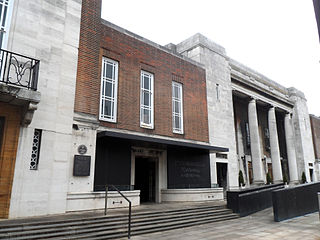
Stoke Newington Town Hall is a municipal building in Church Street, Stoke Newington, London. It is a Grade II listed building.

Havering Town Hall is a municipal building in Main Road, Romford, London. The town hall, which is the headquarters of Havering London Borough Council, is a Grade II listed building.

Chingford Town Hall is a municipal building in The Ridgeway, Chingford, London. It is a locally listed building.

Leyton Town Hall is a municipal building in Adelaide Road, Leyton, London. The building, which includes Leyton Great Hall, is a Grade II listed building.
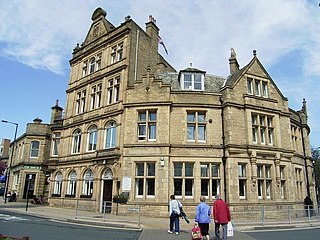
Keighley Town Hall is an early 20th century municipal building in Keighley, West Yorkshire, England. It is a Grade II listed building.

Dukinfield Town Hall is a municipal building in King Street, Dukinfield, Greater Manchester, England. The town hall, which was the headquarters of Dukinfield Borough Council, is a grade II listed building.
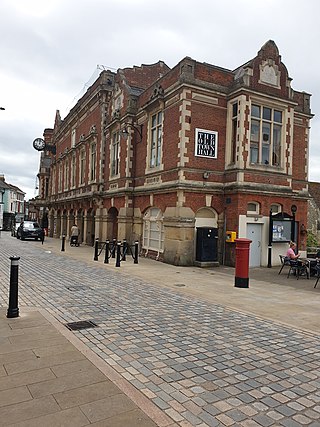
The Old Town Hall is a municipal building in the High Street, Hemel Hempstead, Hertfordshire, England. The town hall, which was the meeting place of Hemel Hempstead Borough Council, is a Grade II listed building.
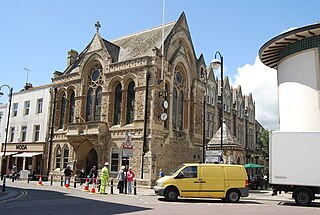
Hastings Town Hall is a municipal building in Queen's Road, Hastings, East Sussex, England. The town hall, which was the meeting place of Hastings Borough Council, is a Grade II listed building.
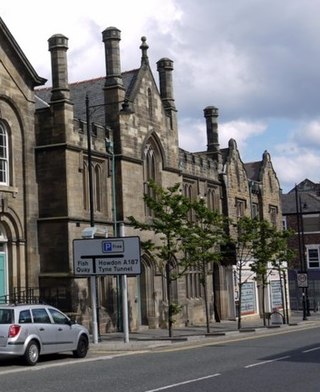
Tynemouth Town Hall, also known as North Shields Town Hall, is a municipal building in Howard Street, North Shields, Tyne and Wear, England. The town hall, which was the headquarters of Tynemouth County Borough Council, is a Grade II listed building.

Farnham Town Hall is a municipal building in South Street, Farnham, Surrey, England. It provides the offices and the meeting place of Farnham Town Council.

Huntingdon Town Hall is a municipal structure on Market Hill in Huntingdon, Cambridgeshire, England. The town hall, which was the headquarters of Huntingdon Borough Council, is a Grade II* listed building.
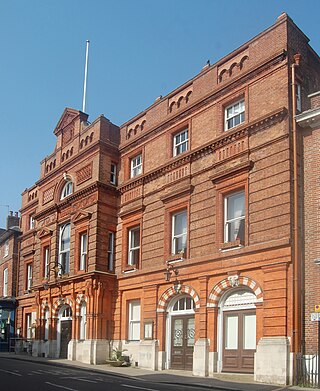
Lewes Town Hall is a municipal building in the High Street in Lewes, East Sussex, England. The structure, which is the meeting place of Lewes Town Council, is a Grade II listed building.
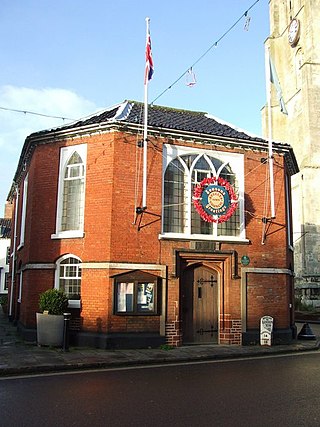
Beccles Town Hall is a municipal structure in New Market, Beccles, Suffolk, England. The structure, which accommodates the offices and meeting place of Beccles Town Council, is a Grade II listed building.

Hartlepool Borough Hall is municipal building, which served as the meeting place of the old Hartlepool Borough Council, before it amalgamated with West Hartlepool County Borough Council. It is located on the Headland, Hartlepool in County Durham, England and is a Grade II listed building.

The Corn Exchange is a commercial building in the Market Place in Saffron Walden, Essex, England. The structure, which is currently used as a library, is a Grade II listed building.


















